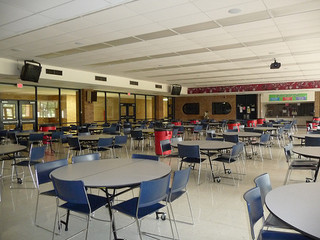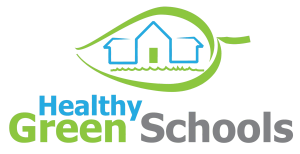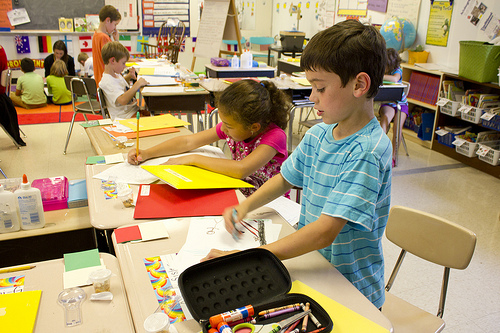It’s school season! Over the years we came up with some great tips all about schools. Here a rundown of some of our “back to school” greatest hits!
I’m sure you’ve done what you can to limit toxic chemical exposure in you home, but what about your child’s school? “The Green Flag Program for Environmental Leadership,” from our partners at the Center for Health, Environment and Justice, provides a framework for schools to engage in environmental advocacy and offers a great breakdown on how to propose safer chemical polices to the administration.
It focuses on four major project areas:
- Reduce, Reuse, Recycle
- Integrated Pest Management
- Indoor Air Quality
- Non-Toxic Products
The Cafeteria

If your child’s school cafeteria purchases organic products- LUCKY! For the rest of us, many of the foods you’ll find in a typical school cafeteria are filled with artificial colors, loads of sugar, artificial dyes, and pesticides. Yes, some organic foods contain a lot of sugar- but the amount of pesticide residue is much lower. Err on the safe side of caution and pack lunch.
Need more information about chemicals in food? Check out Food Babe’s blog here.
Cleaning up
Schools should be clean, but many popular cleaning brands contain toxic chemicals linked to negative health effects. Phthalates are hormone disrupting chemical often found in fragrances that are included in many cleaning products.
There has been a lot in the news about flame retardants: to limit exposure, ask school administrators to vacuum with a HEPA filter. For more information on finding safer alternatives for cleaning, click here. If you like more information on fragrances in particular, read our blog, “My best feelings are natural, not synthetic.”
Toxic Turf
Some schools are implementing synthetic turfs as a replacement to grass fields. Many of these turfs are made of toxic substances and tested positive for lead, benzene, toluene and other harmful chemicals. Here’s an action guide to decrease and prevent lead exposure from toxic turfs by working with school administrators who may want to install a synthetic turf at your child’s school.
For more information on synthetic turf, check out our blog.
In addition to synthetic turfs making their way onto the playground, toxic pesticides have also made their mark. Combat pesticides on your child’s playground by introducing administrators to an integrated pest management program (IPM). An IPM program isn’t only more effective in beating pests it is also cheaper.
Green Initiatives
 Jennifer Hankey gave us great advice about green initiatives. Many schools and daycares are beginning to adopt green initiatives and the results are tangible. Environmental Working Group noted that green schools have less absences, and a 2002 study by the Indoor Environment Department at the Lawrence Berkeley National Design Laboratory found that “green technology could “lower cold and influenza by 9% to 20%, and allergies and asthma drop by 8% to 25%.”
Jennifer Hankey gave us great advice about green initiatives. Many schools and daycares are beginning to adopt green initiatives and the results are tangible. Environmental Working Group noted that green schools have less absences, and a 2002 study by the Indoor Environment Department at the Lawrence Berkeley National Design Laboratory found that “green technology could “lower cold and influenza by 9% to 20%, and allergies and asthma drop by 8% to 25%.”
We may not be able to make the school year better, but we’ll do what we can to help reduce your exposure to toxic chemicals. As a bonus, check out our blog with some great ideas on how you can reward your child’s teacher in an eco-friendly way.




